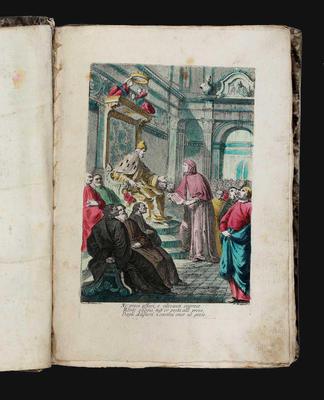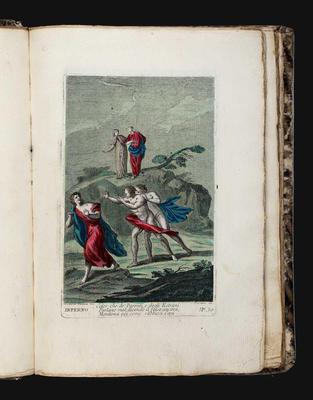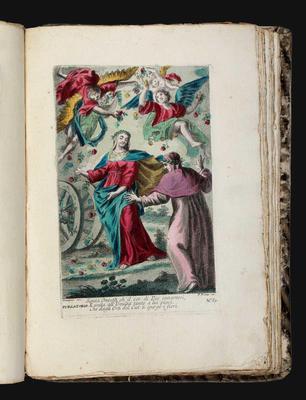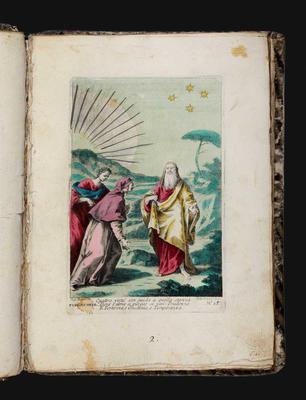Dante Alighieri
Series of the engravings from the Zatta edition of Dante’s Collected Works.
Venice, Antonio Zatta, 1757-1758.Large 4° (290 x 196 mm). 104 (out of 114) engravings printed on strong paper and skilfully coloured by a contemporary hand. The plates are numbered [1], 1-107. The plates illustrating the Paradiso are numbered in roman, with the exception of plat no. 98. It lacks: Petrowna' portrait, dedication, Dante's portrait, the plate with the medals and those with Dante's monument and the plan of the Inferno, moreover plates numbered 39, 40, 41 and 43 (Cantos V, VI, VII and IX of the Purgatorio). Plate mark shorter compared to that of the edition with the text. The names of the engravers and the references to the Canto erased. Slightly later marbled cardboards. A very good, untrimmed copy. Some stains, a few thin wormholes in a few leaves, a but thick paper.
Provenance: ‘Felix Bacco' (eighteenth-century ex-libris on the front flyleaves). Livio Ambrogio collection.
Suite of engravings, in contemporary colouring, from the celebrated Zatta edition of Dante's collected works, issued in Venice between 1757 and 1758. The plates are colored by a contemporary hand. At the foot of every plate is added a terzina written on purpose to explain the episode depicted. The technique is the watercolor and the style recalls that used by Remondini for the vues d'optique, reflecting a taste which is sophisticated and popular at the same time. The colors of the human figures and their dresses, in particular, are realized with great skill.
The plates of the Zatta edition were also sold separately either bound in a book or as decorative prints arranged two by two with the arguments to each Canto printed at the centre between the two engravings. In the present copy the plates were clearly prepared to be bound in a volume.





